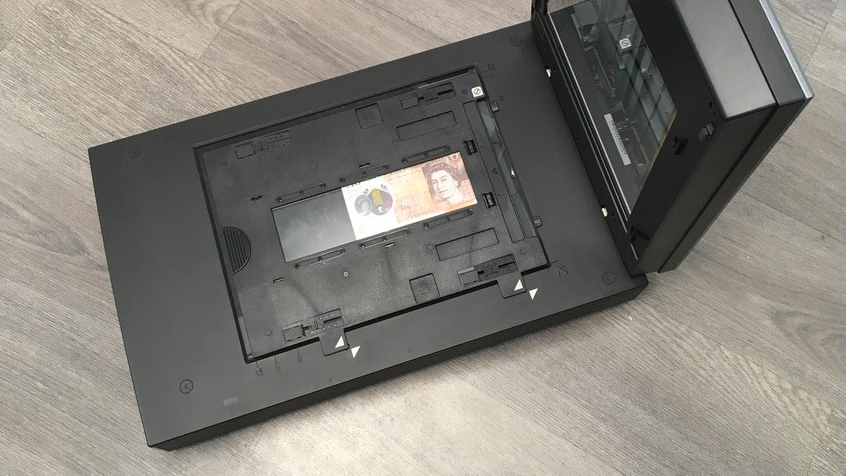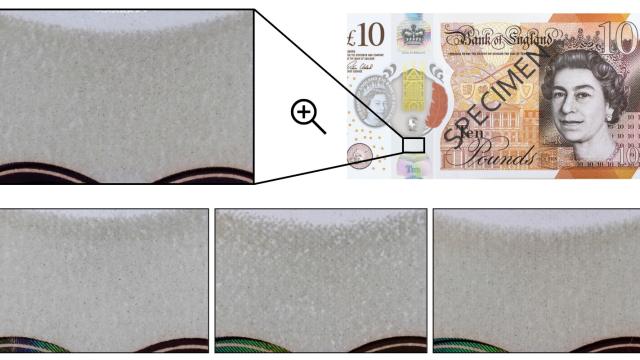One of the reasons countries around the world are transitioning from paper to plastic polymer banknotes was the promise they’d be harder to counterfeit — but it didn’t take long for fakes to proliferate. However, an avoidable flaw introduced during the manufacturing process of polymer banknotes could be used as a unique fingerprint to validate legitimate currency.
Researchers from the Department of Computer Science at the University of Warwick and Durham University in England have discovered that every single polymer banknote has a unique but unintentional fingerprint that could be used to create a verification system that’s impossible to fool. The research is detailed in a paper, ‘Anti-Counterfeiting for Polymer Banknotes Based on Polymer Substrate Fingerprinting,’ recently published in the IEEE Transactions on Information Forensics and Security journal, which also explains how a viable validation system could be created that’s more foolproof than a cashier shining a UV light on a bill.

When polymer bills are being manufactured the application of a critical layer known as the opacity coating results in impurities in the ink being randomly dispersed producing subtle translucent patterns that become more apparent when the banknote is held up against a bright light source.
To the naked eye, it’s just random imperfections that are barely discernible because other details, including imagery, text, and intentional security features, obscure the patterns. But every bill has small regions where those patterns are unobscured, and when placed on a backlit film scanner, those random patterns can be extracted in extreme detail and used as a unique fingerprint.
Having a unique fingerprint is one thing, actually taking advantage of it to identify counterfeit currency is the real challenge. The researchers propose creating a database cataloging the unique fingerprint of every single bill produced at a mint, correlated with its serial number, and then using that as a tool to perform a pattern match in order to verify whether a suspected counterfeit banknote is real or not. This verification wouldn’t happen every time a shopper passed a stack of bills to a cashier, but law enforcement agencies could be given tools that access the database allowing them to easily spot a fake without requiring suspected counterfeits to be sent away to experts for in-depth analysis.
With almost four billion banknotes circulating in the UK at the moment, the proposed system seems like it has some logistical problems to overcome first because that’s a lot of data to store and process. But speaking to New Atlas, University of Warwick professor Feng Hao points out that the fingerprint patterns are scanned and converted to small 256-byte vector files, and for four billion banknotes that adds up to just over a terabyte of storage. If the system only focused on higher-value banknotes, which counterfeiters target, the storage and bandwidth requirements would be even smaller.
Given how quickly smartphone cameras have progressed and improved, there’s a very real chance this counterfeit spotting system could one day be rolled out through an easy-to-use app so it’s accessible all over the world. But if it ever came to be, don’t expect it to be made available to anyone other than law enforcement. No one wants counterfeit spotting vigilantes running around with smartphones in hand, accusing every little mum and pop shop of being a money-laundering front.
